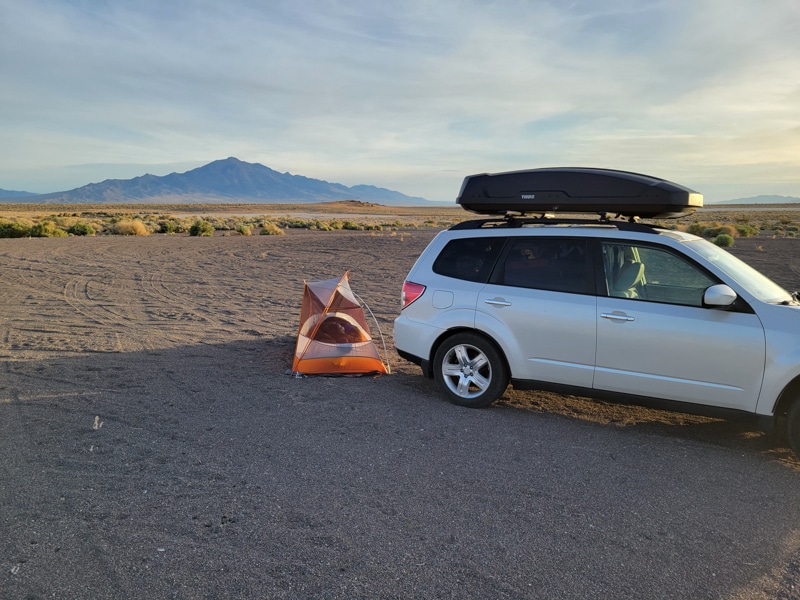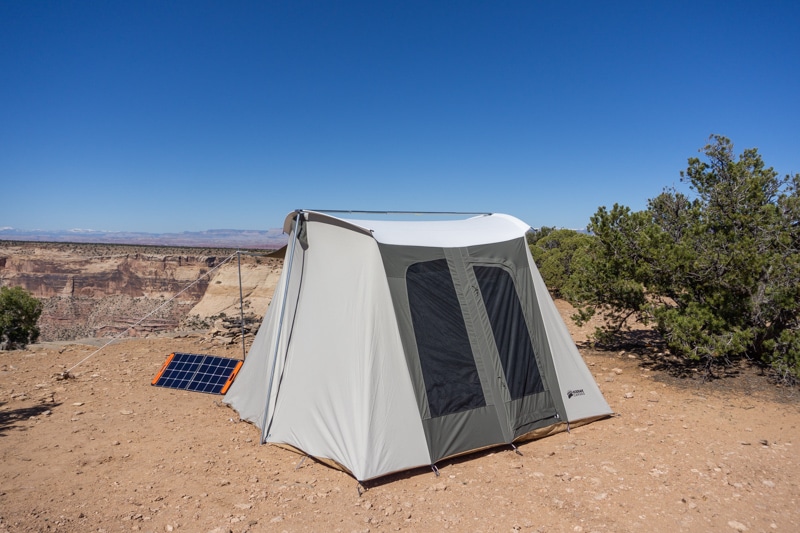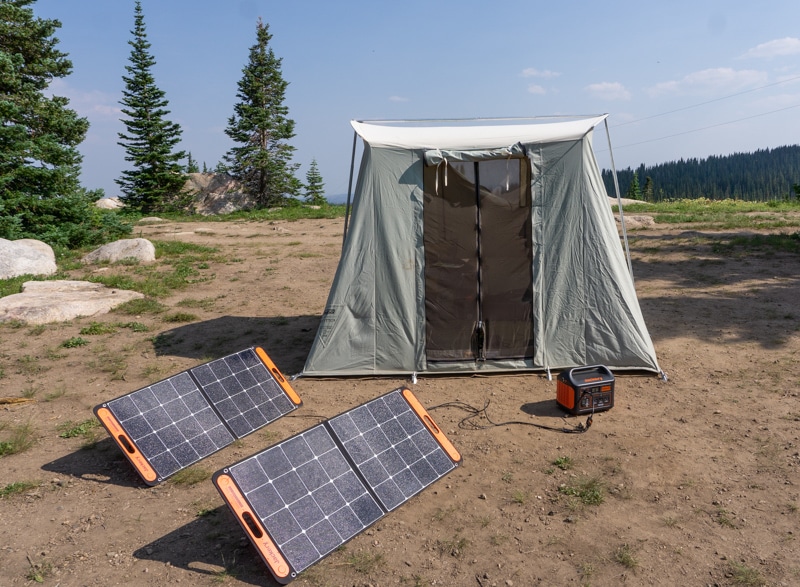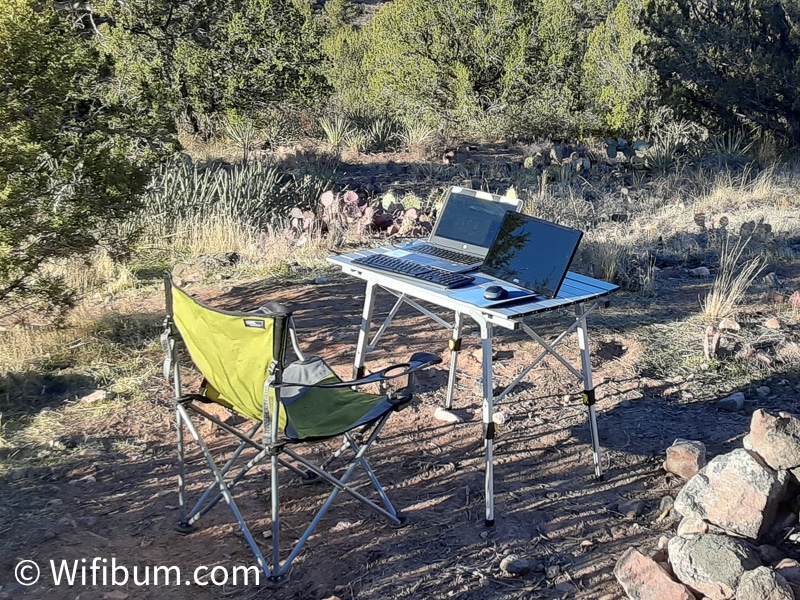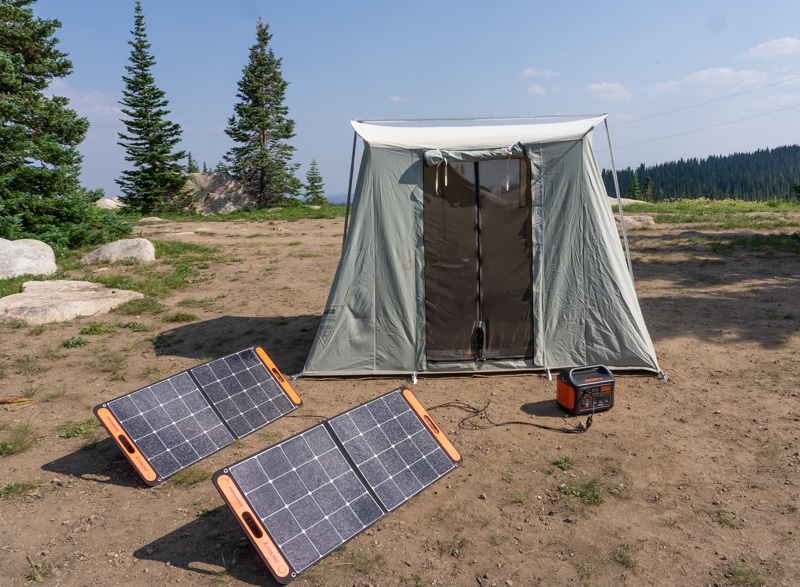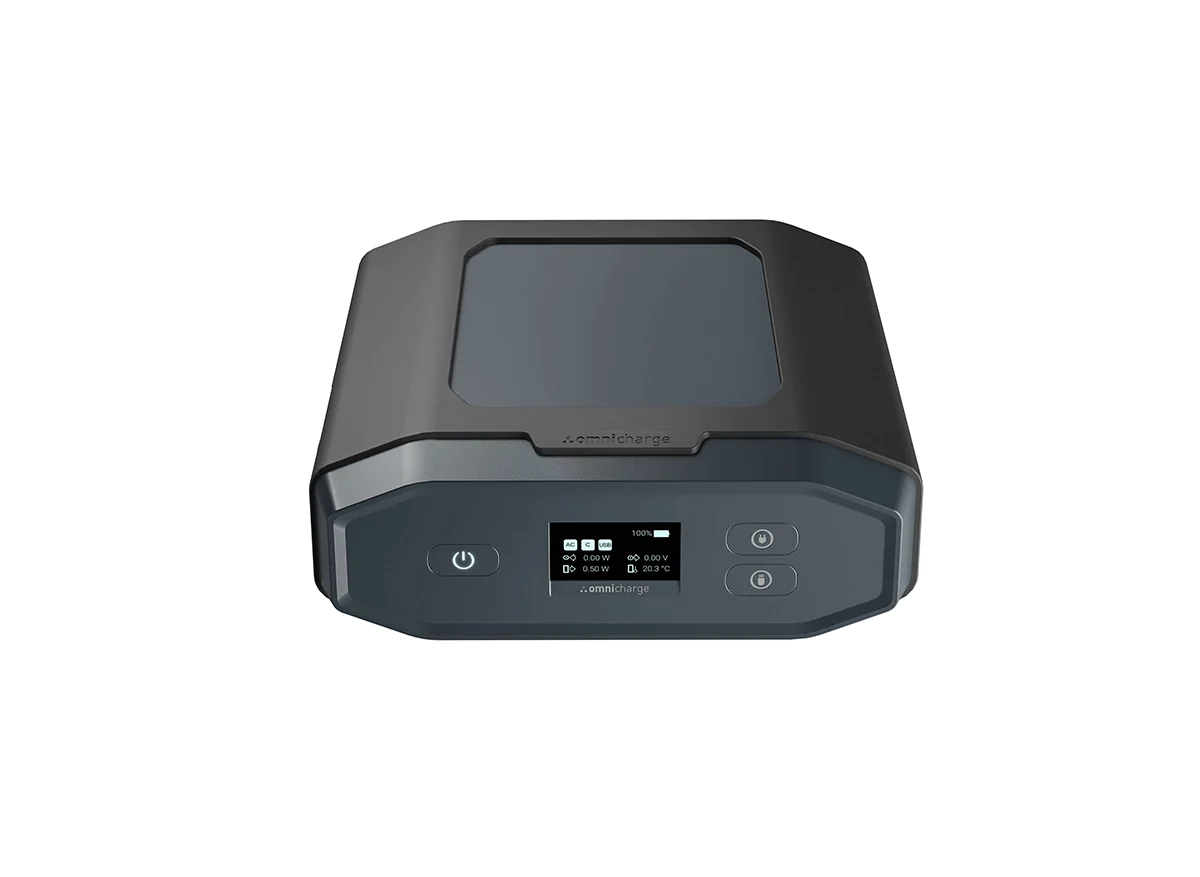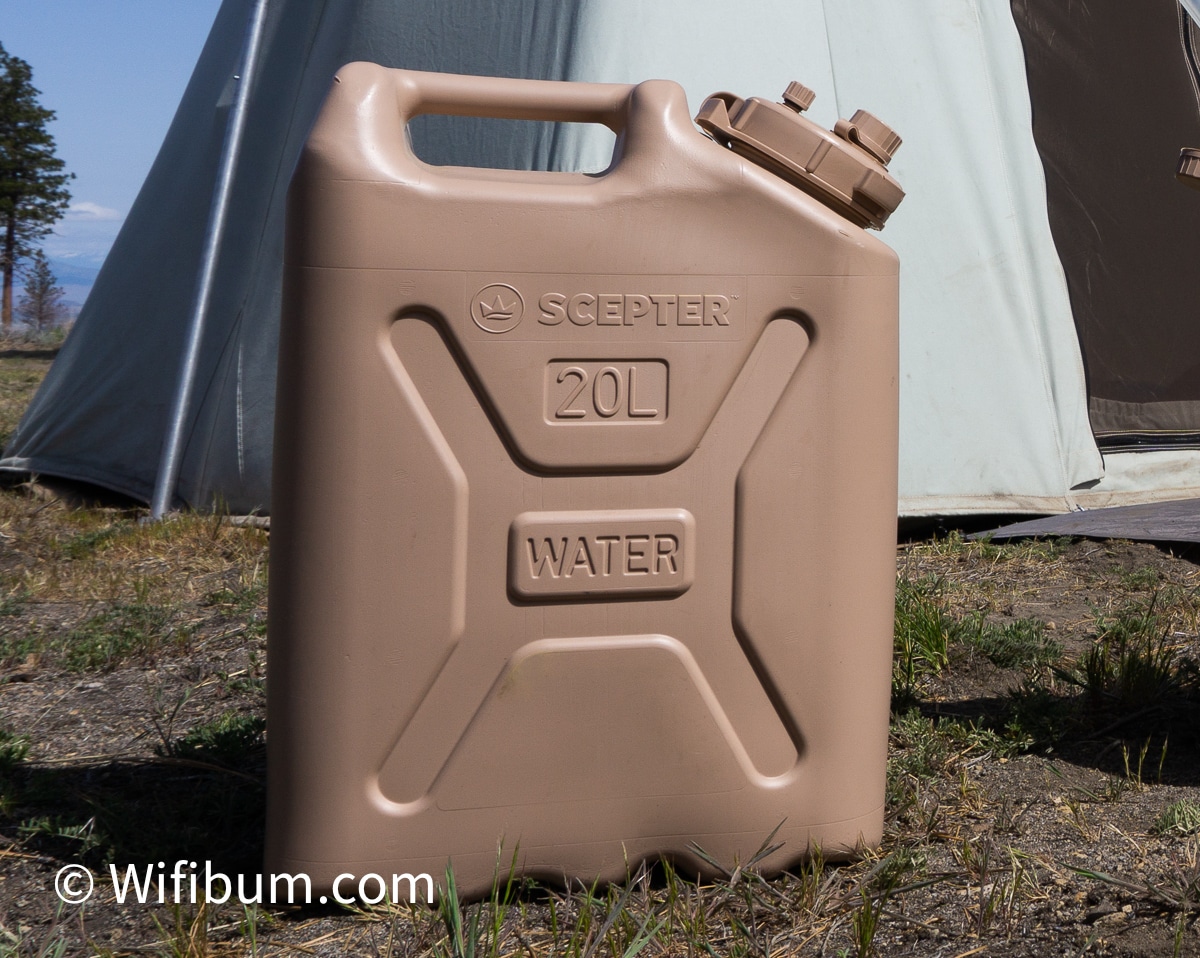Hi there!
Below is a list of all the gear I currently use or similar alternatives.
This will cover everything from my vehicle to my “office” set up, to my DIY toilet.
Keep in mind, 99% of my camping is free backcountry camping with zero amenities, so that’s why some of this gear may be a bit extreme for some people. In the summer, I typically can be found working remotely in a library or cafe.
It’s important to note I acquired all this gear over 5+ years.
Table of Contents
Vehicle
Cargo Box
Office Tent (canvas tent)
Computer Gear
Wifi and Boosters
Power Station & Solar
Sleeping Gear
Water Storage
Safety & Security
Food & Cooking
Activity Gear
Hygiene
Laundry
Toilet
I was overwhelmed when I first started out. In reality, you essentially can start out with a battery pack, a camp table, a camp chair, and a mobile hotspot.
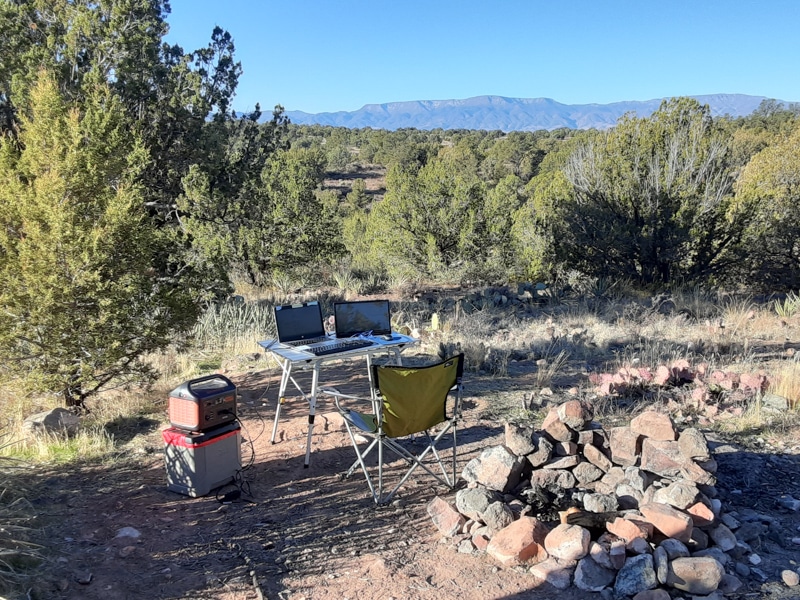
Then, I would purchase something that solved my biggest pain point and then go out on another trip.
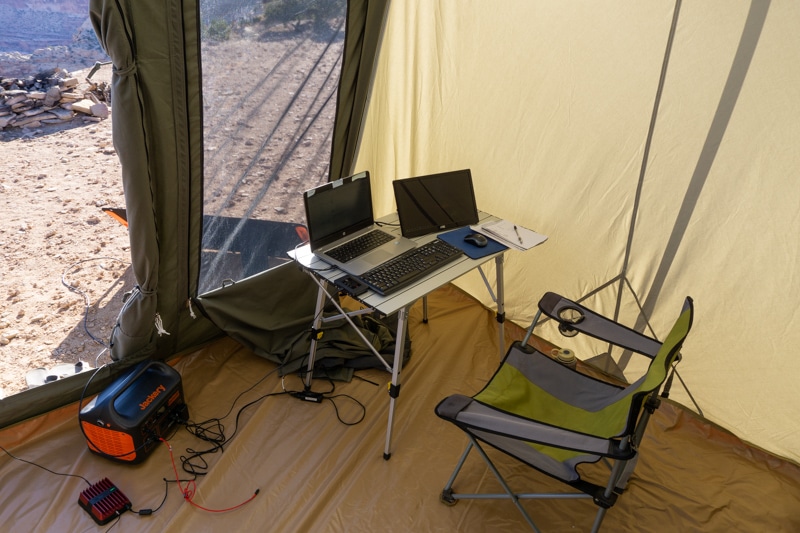
Note: Many of these links will be affiliate links where I earn a small amount if you purchase any product through the links. I’d appreciate using them because it’s how I try to make money on this website AND keep display ads off it.
I have never accepted free or discounted gear.
Vehicle & Accessories
I adventure in a 2009 Subaru Forester. It can handle 90% of the forest roads I drive on. My only modifications have been a roof rack and DIY camping curtains.
While my girlfriend doesn’t work remotely with me, we go on many trips together.
Frequently, my girlfriend and I sleep in the back of it at trailheads or if we arrive late at night at a camping area. I installed a roof rack and bought a cargo box to make it easier to hop in the back without moving a ton of gear.
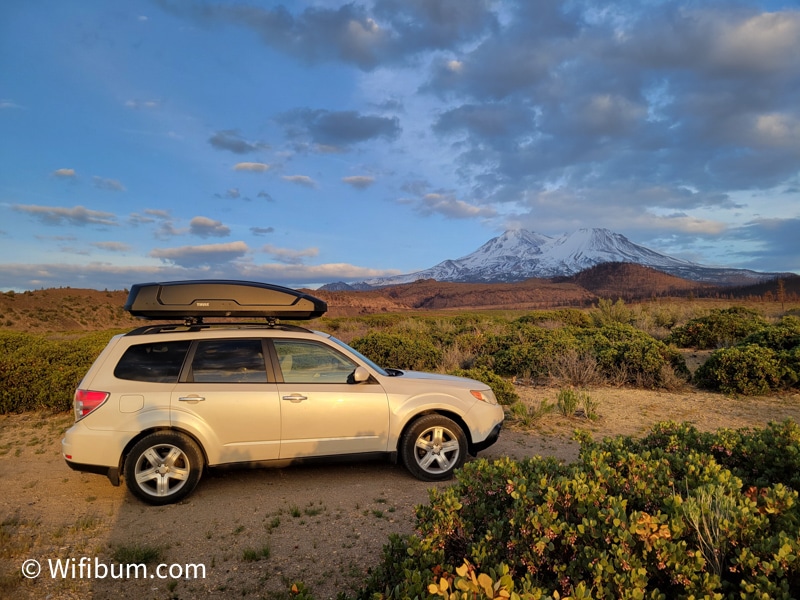
Thule Cargo Box
I have a love/hate relationship with this Thule Cargo Box.
I got the Thule Force XT XL which is a fancy way of saying it has 18 cubic feet of space. The largest they make is 21 cubic feet, so this is the 2nd largest.
On my first trip, I put a small hole in the front of it simply by driving on the freeway (a bit too fast). 4+ years later, I have had zero other damage to it and I’ve never taken it off since I purchased it.
The Thule fits a lot of gear and makes traveling much easier, so I love it. However, for the price, I wish the locking mechanisms felt more sturdy.
It fits my large canvas tent, camp chairs, camp table, sleeping bag, and random items like extra shoes and hiking backpacks.
It’s also great to have when I put my mountain bike in the back of the SUV, all the other gear goes up there then.
So overall, it’s cheaper than upgrading to a larger vehicle, but it also should be higher quality for the price.
Tent / Office
If you don’t have a camper van, RV, or somewhere “weatherproof” to work, a canvas tent is your next best option. They are spacious, waterproof, and “windproof.” After getting familiar with the instructions, they only take 15 minutes to set up.
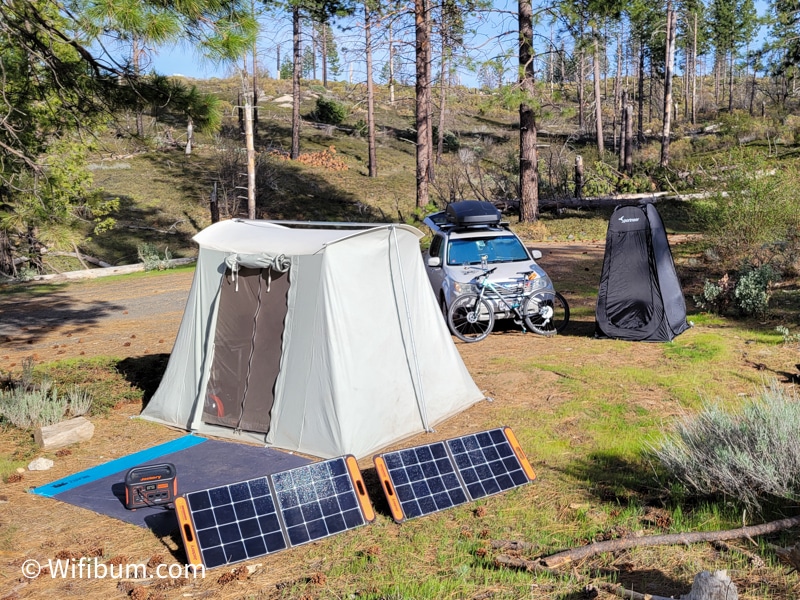
In high winds, they can be a little annoying because the canvas flaps around and it’s loud. Also, if you’ll be in the tent when it’s 80F+ outside, it will get really hot (at least the ones with vents on only 2 sides). I tend to find something else to do or work elsewhere during those occasions. I typically work from libraries in the summer.
The Canvas Tent
Although, I currently alternate between Springbar and Kodiak. I’d recommend the Kodiak VX because of the VX version has 4-sided windows(read my full comparison here). Kodiak is also cheaper but of equal or better quality.
The Kodiak 10x10 is perfect for families and is considered a 6 person tent.
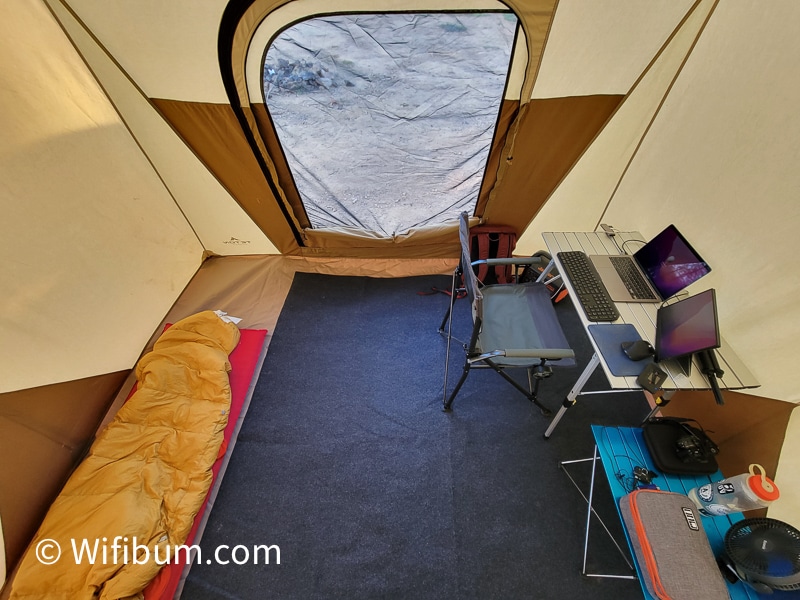
Computer and Accessories
I haven’t dug into this area of my gear in any articles because many of us are given this gear through work, and you don’t always have a choice.
Here’s my article on the fingerless gloves I use for typing when it’s cold.
Laptop: Macbook Air
When you do have a choice as I did a few months ago, I prioritized speed and battery life. Everyone has different needs, and I’m no computer expert, so look elsewhere for that information.
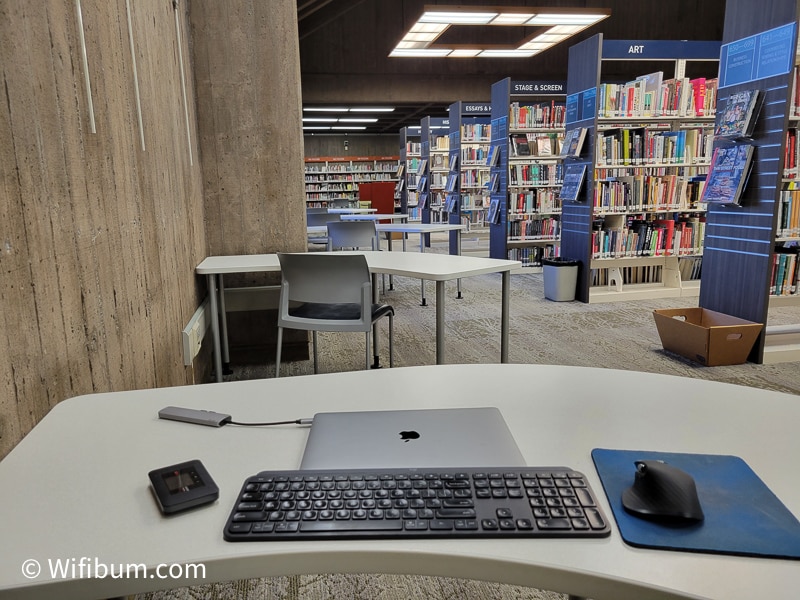
I upgraded from a 5+ year old windows laptop to a Macbook Air and will never go back. The battery life helps you need less from your power source and it’s very fast for my needs (web-based softwares, some light photo and video stuff).
Dual Display
I’m currently using this monitor as my second screen. I had an issue with the cord that came with it, but they reimbursed me for a new one that works.
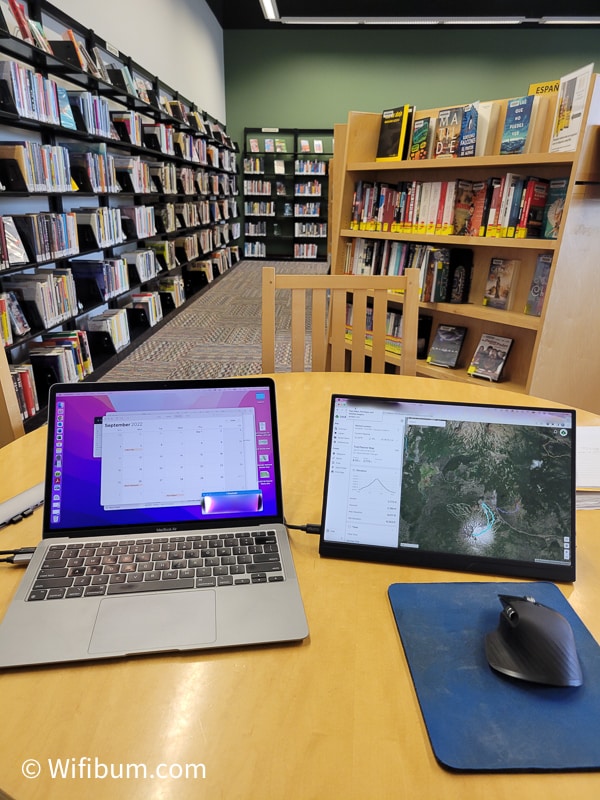
I do recommend having it be a portable USB-based model. The screen will be smaller than what you can use at home, but it will save space. It will also drain your battery faster, so keep that in mind.
Mouse & Keyboard
Everyone has their own preferences, but if you use a mouse and keyboard at home, I would recommend bringing them on the road if you’re doing serious work.
Also, bring a mousepad! I know many don’t use them, but most camp tables and camping areas are not going to be mouse-friendly without a mouse pad.
Wifi Device and Signal Amplifiers
I have a couple of articles on this topic. View how to get wifi camping and does WeBoost really work?
Verizon Jetpack
I’ve found Verizon has the best coverage in the western states and that’s what most of my friends use as well.
Note: there is a one-time fee for the device, then you have to work with Verizon to get it activated and added to your plan. It's cheap to add to existing plans.
A Jetpack is a stand-alone device for creating wifi connections. It’s better than using your phone as a hotspot constantly.
WeBoost Cell Signal Amplifier
This is one of my purchases I probably didn’t need to make, but it’s saved my ass a few times.
You can avoid making this purchase by spending more time researching the cell service in the area you’ll be.
However, nothing is fool proof, so this is a great “just in case” purchase that saves you the inconvenience of driving back and forth to the nearest town.
Portable “Office Space”
Table
If you’ve been following along, you know I love my current camp table. It’s one of the best purchases I’ve made and it’s been with me since the beginning.
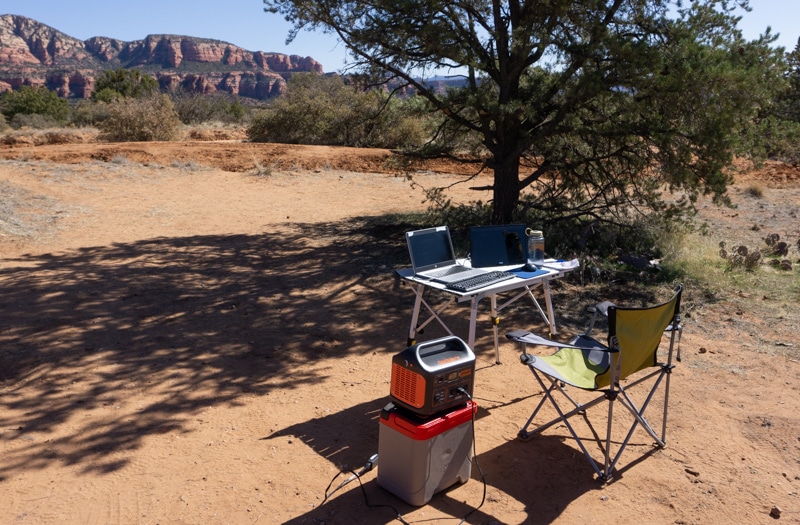
It fits a laptop, extra monitor, keyboard, and mouse, and has room to spare. It also has crossbars in the front allowing your knees to fit fully under it.
A very versatile, durable, and functional camping table. I primarily use it as a remote working desk, but it's great for any trip.
Chair
It’s important to have a chair with a firm bottom for decent posture.
I offset this by walking around and stretching and exercising more. I’ve never had back pain or any issues as long as I get up every 30 to 60 minutes and move around.
When it’s hot, you will get some swamp butt with the fabric chair in the heat. If you can find a mesh bottom or some other solution, do that.
Power & Solar
In my opinion, when it comes to power, it’s important to have lots of it and redundancy.
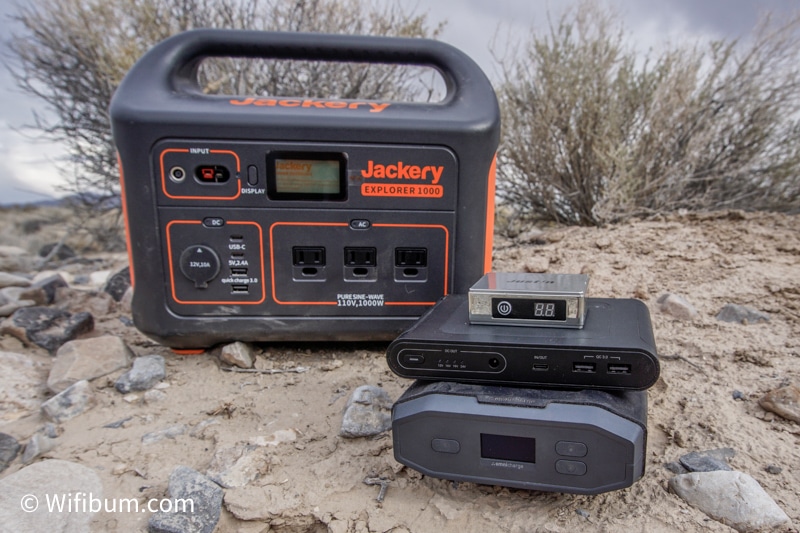
Jackery
I use a large Jackery as my primary battery. I also use 2 of their 100W solar panels to charge it while I’m off the grid.
If I was in the market today, I would upgrade to the Jackery 1000 Pro or an Ecoflow.
The Jackery 1000 is a great all-around power station. It will power you through a weekend or even longer with solar panels.
Note: Amazon does NOT allow you to return Jackery or other batteries due to the lithium battery. I highly recommend buying direct (and it's normally much cheaper than Amazon).
OmniCharge
Then I have 2x Omnicharge. One has an AC outlet which allows for convenience and a backup for my laptop if my Jackery runs out of juice.
In my opinion, this is simply the best of the best for working professionals doing significant work on the road. It's great for staying fully charged and carefree power usage. It charges my dual monitor set up, camera, phone, Verizon jetpack wifi device, and more.
I say convenience because sometimes I work remotely from a park or other more social setting, and I don’t want to haul around a big-ass Jackery. This Omnicharge fits easily in a backpack, and you can set it on a table without getting weird looks.
Then I have a smaller Omnicharge which I typically use for my phone or camera. This came for “free just pay shipping” with my other Omnicharge, otherwise I wouldn’t have it.
Small Justin Battery Pack
Then I have a small Justin battery pack that I primarily use for backpacking, but it is also great for long day hikes if you forget to charge your phone ahead of time.
Sleeping
Sleeping Pad
I use a Teton Sports pad that I use solely for this purpose.
My other sleeping pad is an expensive backpacking one, so I wanted something more durable.
I’m very tough on my gear, and it’s held up surprisingly great.
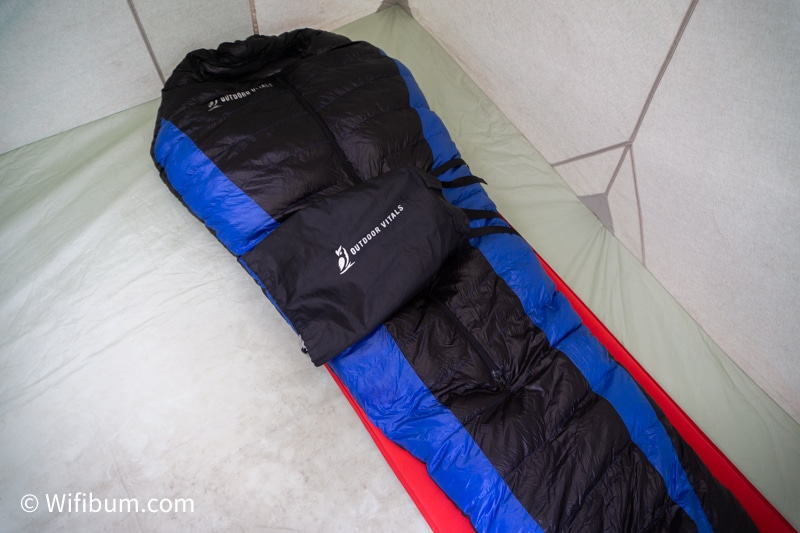
This Teton Sports pad has been comfortable, and never had any issues with it protecting me from the cold ground. It is a bit bulky compared to what I’m used to.
Sleeping Bag
I have two sleeping bags. One is a 15F degree bag and one is a 41F degree bag.
I try to stay at elevation so it’s cooler. Through July, I typically bring the 15F since it will still get cold at night in many areas I camp. I don’t get too warm with it until it doesn’t go below like 60F at night.
When it’s 55 to 60F or warmer at night, I bring the lighter one. It’s a cheap Kelty from like 10 years ago.
Sometimes, I just use a sleeping bag liner when it’s really warm at night.
Camp Pillow
For years, I brought along an extra full-size pillow from home. It got dirty and takes up more space than I wanted.
Recently, I bought a $20 throw pillow that I found at Target. It was comfortable and about half the size as my previous pillow.
Backpacking pillows are too small for me, so finding a throw pillow works better.
Other Recommendations
Keep an eye on for cheap wool-blend long underwear. I found a pair on clearance and solely use it for sleeping. They save the wear and tear on my Ice Breaker merino wool gear.
Water on the Road
When you first start out, you might be buying gallon water jugs or the 2.5gallon dispensers from the grocery store.
Eventually, when you’re camping enough, you’ll want to upgrade to a more sustainable solution.
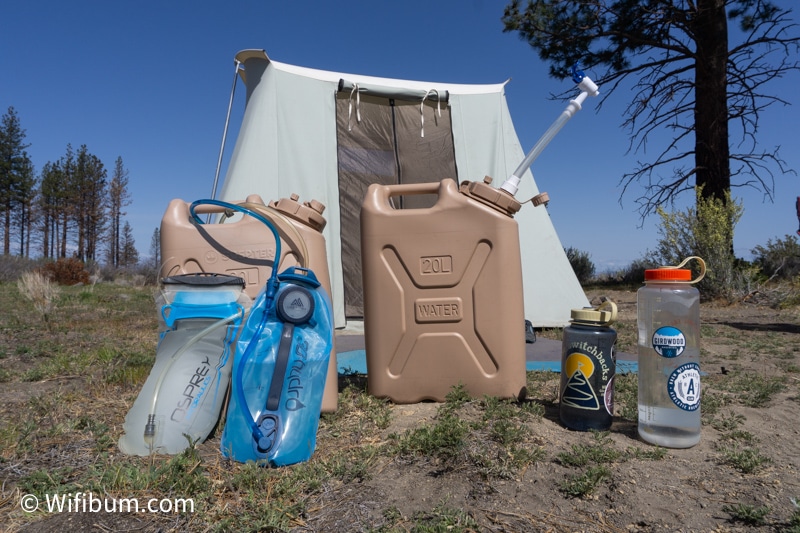
I use 2x 5 gallon Scepter water containers on most of my trips. They are easy to fill up at grocery stores and other areas.
I use two of these on most trips along with a few Nalgenes. It typically will last me up to 8 to 10 days for one person.
On longer trips, I will fill up every container I have ahead of the trip (hiking bladders, nalgenes, etc.).
Safety and Security
For years, I never had any issues or weird encounters.
Once I moved to California, I have weird encounters on nearly every trip.
Whether it be people speeding around at 3am, locals driving around the roads and stopping to look in my car while I was in my tent, or people shooting into my camp accidentally, I started thinking about safety more.
I use a portable lockbox for my computer and other expensive gear and tether it to my vehicle. I’ve even used a tent lock lol.
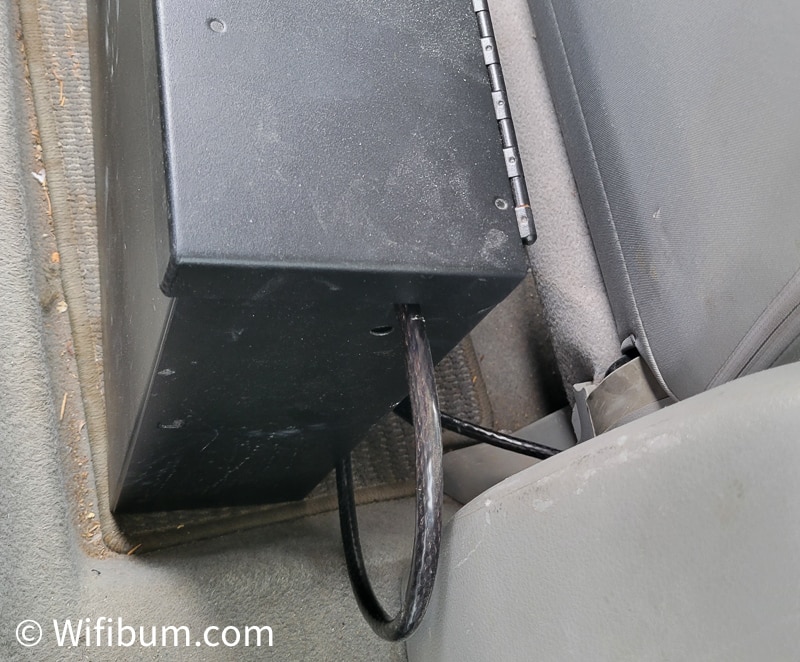
Probably need to get a bulletproof vest and helmet next 4th of July if I’m in California again.
Communication
The first thing I do before doing any activity such as hiking, biking, or anything I know I won’t have service is to text my girlfriend or a friend my exact coordinates.
I typically don’t have any system of “I’m going to check in at X time every day,” but I do let my girlfriend know of any weird things I’ve noticed.
She also knows it’s weird if I don’t text back without giving her a heads-up that I’m going on a long hike or something like that.
In addition, I turn on and carry my Garmin InReach that tracks my location and she can see it in near-real-time online.
Blackout Curtains
My rear windows are tinted, but you can still see through them. I made curtains to help hide gear.
I used blackout material and put curtains on the back, sides, and even behind the driver and passenger seats. The result is no one can see into the back of my vehicle and you can’t really tell that the curtains are there.
Then I put reflectix up on the windshield. So, people can still see into the driver and passenger window, but they won’t see any gear (and likely will see some dirty clothes or trash to prevent them from wanting to come in.
Bear Spray
Often, I find myself in bear country so I tend to have bear spray with me anyways, but I started bringing it inside my tent at night as well.
Primarily for animals but also for Californians.
Hammer
I have a very beefy hammer for my canvas tent and it’s got a sharp hook on the back. It feels like a weapon, and can be used in case of emergency.
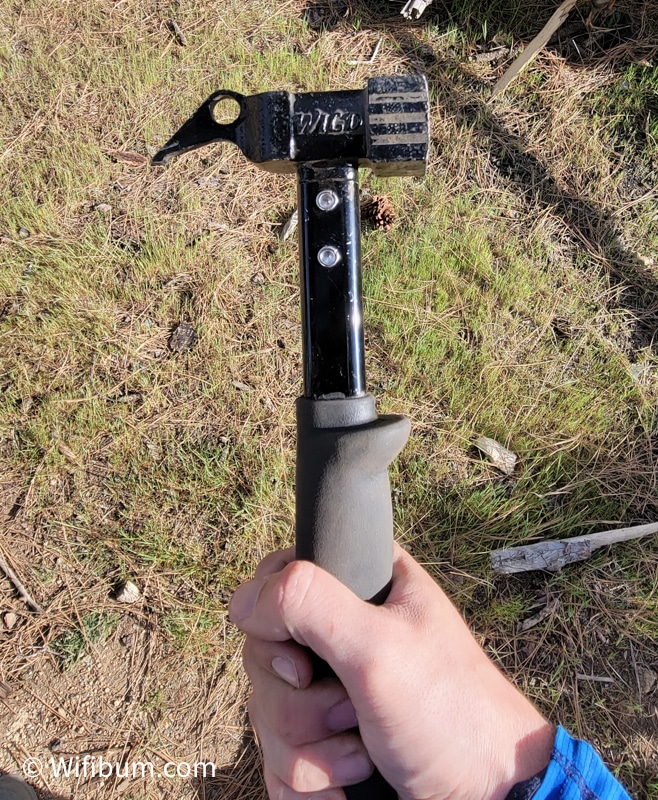
My bear spray and hammer within arm’s reach each night.
You’ll notice, I don’t have a gun on here, but I’m perfectly understanding of those that would bring one into the backcountry (especially after the Cali incidents I’ve had). It might get added sooner than later haha.
Food and Cooking
I’m not a great camp chef.
I use an MSR stove sometimes and make soup or ramen.
Occasionally, I use this cheap Coleman set up to make other things.
I tend to only bring a cooler on shorter trips. I find it to be a hassle to get ice and feel like I wasted too much food because I didn’t have ice.
Lots of granola and wraps.
Activities
Basic mountain bike
I’m a very beginner mountain biker. I bought a Polygon Xtrada 5 and it does everything I need. It’s mostly for riding around in the areas I’m in and the occasional real mountain biking trail.
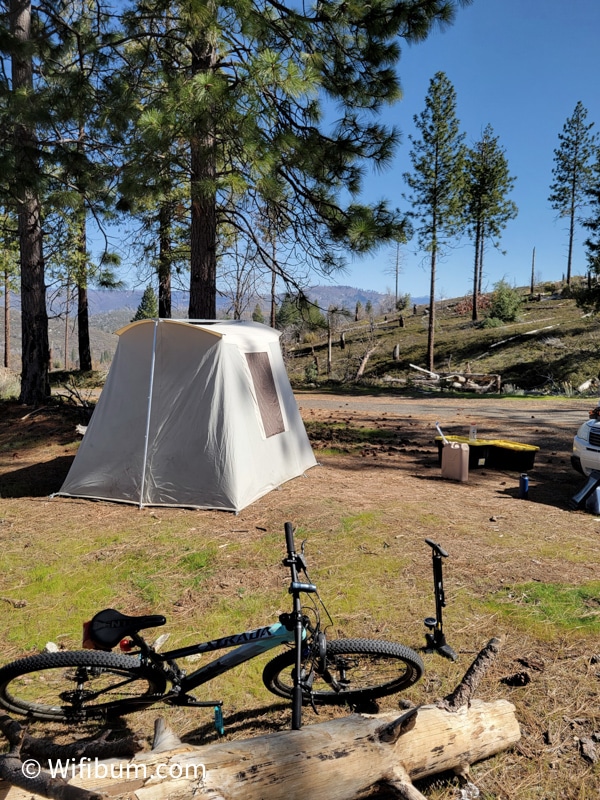
Backpacking gear
Occasionally, I bring my backpacking gear if I have a trip in mind. I typically only have space for my bike or backpacking gear, not both.
Basic fly fishing gear
I am a very poor fly fisherman, but I’ve found that fish are more than willing to entertain me in mountain lakes. The food is less abundant and they have no other choice but to try my fly after a horrible cast.
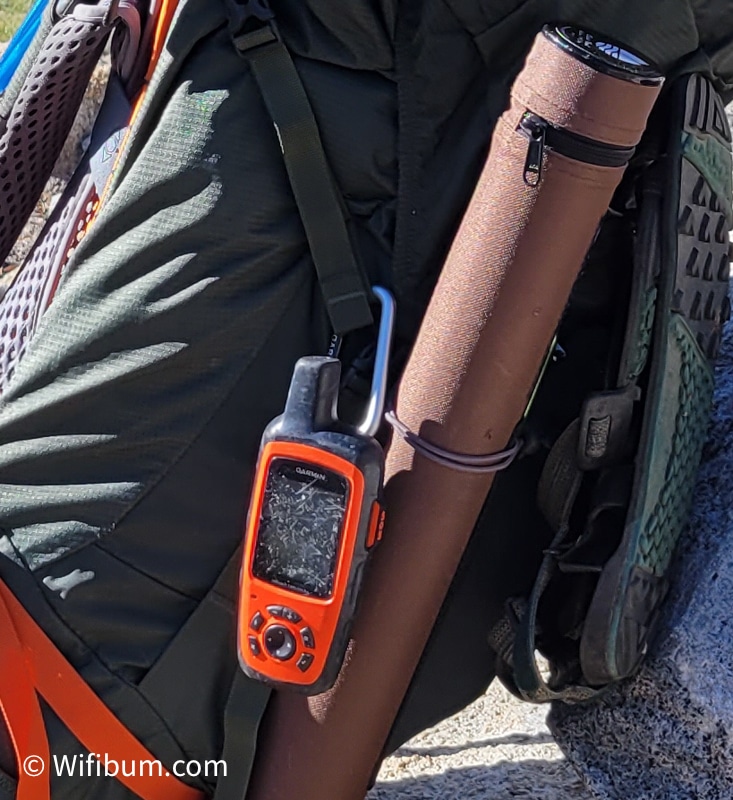
Hygiene
No matter what you do on the road, it will always be less hygienic than what you are accustomed to.
Bring the toothbrush, deodorant, and all the normal stuff you’d bring on any vacation.
Showering
If you’re one of those people that have to shower each day, this lifestyle might not be for you.
Yes, you can bring a portable shower, find paid showers, etc. But those take time to set up, require you to bring more water, or require you to drive just to shower.
So, here’s my preferred solutions.
Jump in a lake or river.
Free camping areas tend to be near lakes, rivers, or streams. Simply, jump in and move around a bit. Rub your face and pits with your hands and that should do 95% of the job.
Notice, I didn’t say bring some soap and have a full bath. Simply jump in and rinse off.
Wet Wipe Bath
Use Dr. Bronner’s soap and put a few drops on a wet wipe. Then wash your pits and privates. Use a few clean wet wipes as a “rinse.” Typically, this will take away all the BO and smell from you (I even tested it on my gf by doing this right before I saw her after 14 day trip!)
Spray Bottle Shower for the Hair
To wash my hair, I get it wet using a spray bottle. It uses much less water than just dumping water on your head.
Once my hair is wet, I use Dr. Bronner’s soap and rub it in. Note: always do this away from water sources, vegetation, and other sensitive areas even if it is the most natural soap you can get.
After the soap has been in my hair for a minute or two, then I dump water on my head. It typically takes 0.5 to 1.0L depending on how long my hair is at the time.
These methods require less water, less gear, and are quicker than the other methods. Maybe it won’t get you 100% clean, but you will be presentable and feel good.
Laundry
I use a dry bag, water, and Dr. Bronners.
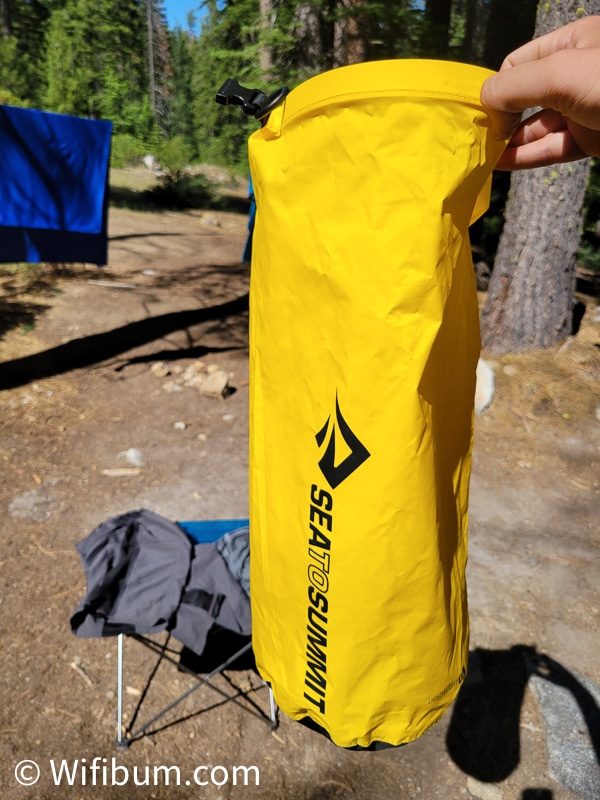
Toilet
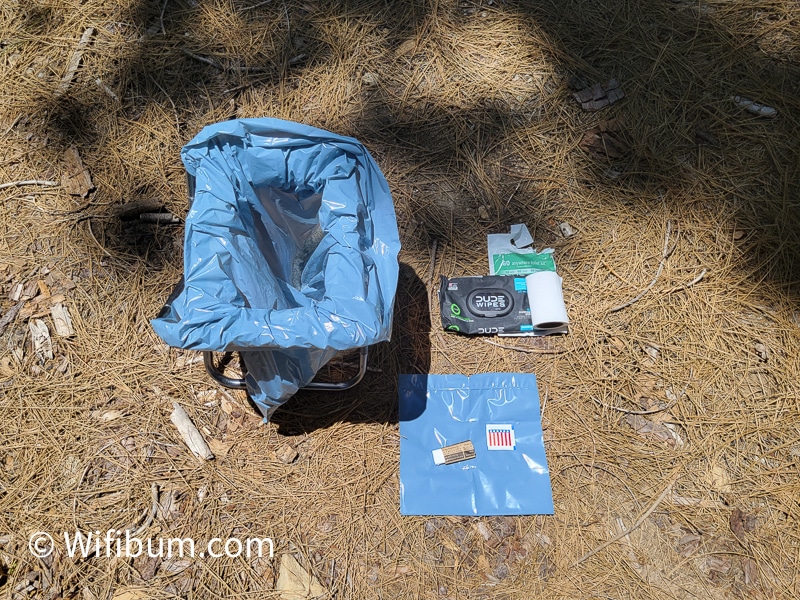
I’ll add to this list as I continue on this journey.
